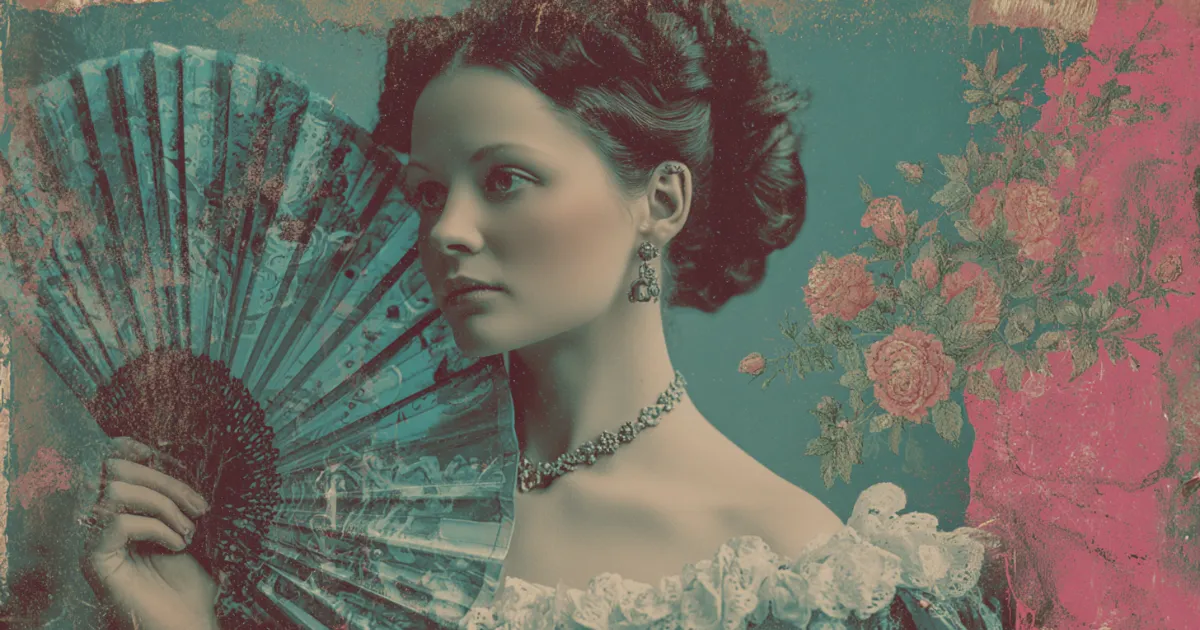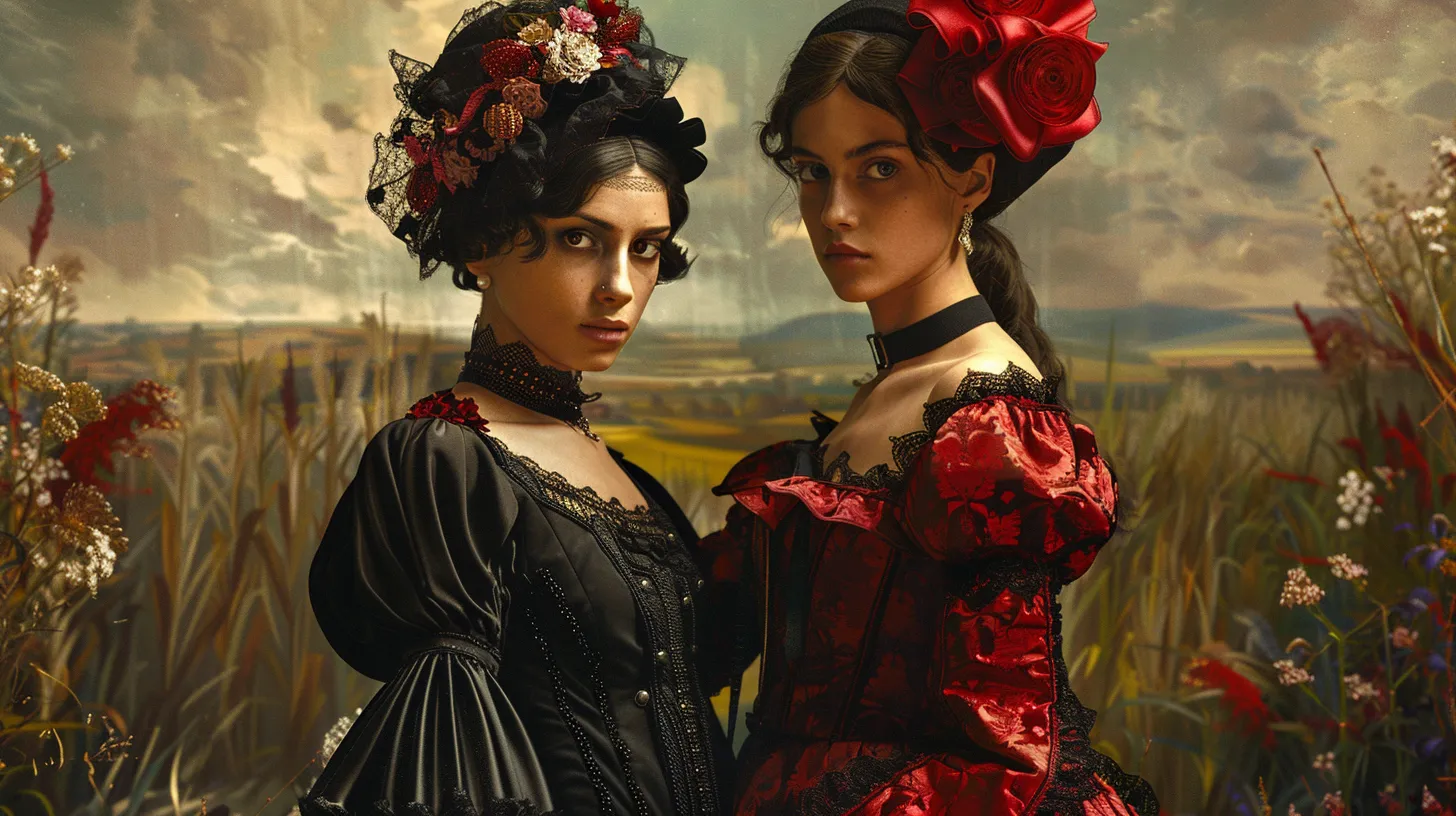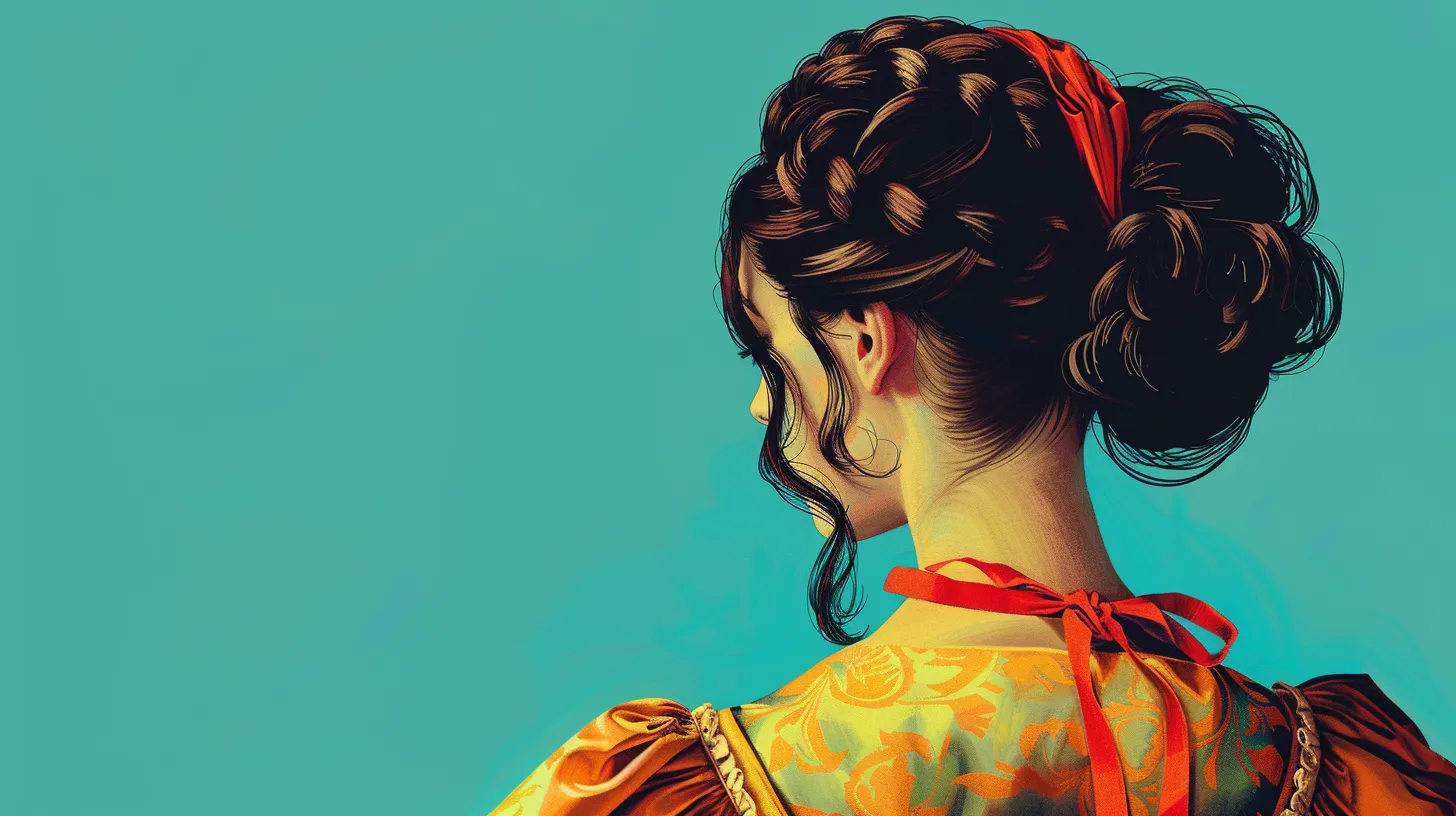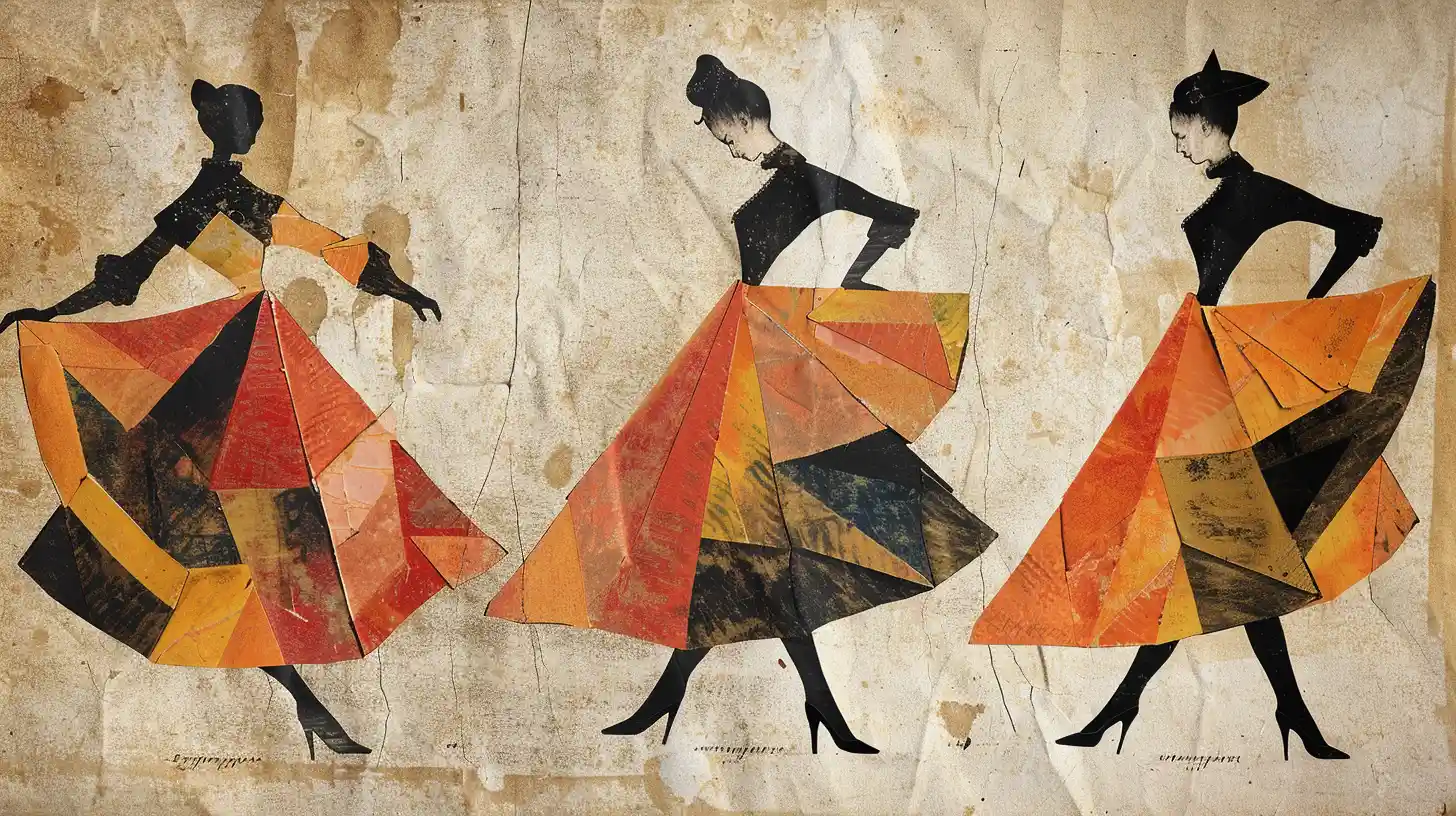
© History Oasis
The Romantic era in fashion marked a significant departure from the classical rules that had governed the aesthetics of the preceding periods.
This rebellion against the established norms emphasized the expression of deep, intense emotions and the celebration of the individual's inner world, encouraging fashion that evoked passion, mystery, and imagination.

Romanticism in fashion prioritized the pleasure of the senses through rich colors, luxurious fabrics, and intricate decorative elements, while valuing the power of imagination over the strict adherence to analytical principles.

During the Romantic era, women's fashion underwent a significant transformation, moving away from the high-waisted, columnar silhouette of the Empire style towards a more dramatic and curvaceous shape.
The skirts of dresses became fuller, featuring deep pleats and gathers that created a striking bell-like profile, emphasizing the lower half of the body.
Simultaneously, waistlines descended to the natural waist, often with a dipped front, accentuating the curves of the female form and creating a more defined, hourglass-like silhouette.

The tailcoat, a staple of men's fashion in the preceding years, maintained its popularity during the Romantic era, albeit with notable modifications to its cut and fit.
Compared to the earlier decades, the tailcoats of the Romantic period became more fitted, closely following the contours of the male physique to create a sleeker, more streamlined appearance.
This shift towards a more tailored look reflected the era's growing emphasis on individual style.

One of the most distinctive features of women's dresses during the Romantic era was the exaggerated, puffed sleeves, which added a striking visual element to the overall silhouette.
These sleeves, known as "beret" or "gigot" (leg-of-mutton) sleeves due to their resemblance to a sheep's hind leg, were voluminous and often extended from the shoulder to the elbow before tapering towards the wrist.
The dramatic proportions of these sleeves contributed to the top-heavy appearance of Romantic-era dresses, creating a bold and eye-catching look that exemplified the period's emphasis on emotion and imagination.

The Romantic era's fascination with emotion, imagination, and a reverence for the past found expression in the lavish decoration of women's dresses.
Gothic-inspired elements, such as intricate lace, delicate embroidery, and elaborate trimmings, adorned the gowns of the period, reflecting the Romantic sensibility and its embrace of the imaginative and the historical.

As the Romantic era progressed, men's trousers underwent a significant transformation, moving away from the restrictive, ankle-length styles that had characterized the earlier periods.
The new trouser silhouette featured a looser, more relaxed fit, allowing for greater ease of movement and comfort.
This shift towards a more casual and practical style of trousers reflected the era's growing emphasis on individuality and the desire for clothing that could accommodate the increasingly active lifestyles of men in the 19th century.

The Romantic era marked a significant departure from the color palette that had prevailed during the Neoclassical period.
While the Neoclassical era favored soft, muted pastel shades, the Romantic period embraced a richer, more vibrant array of colors.
This shift towards deeper, more saturated hues reflected the era's emphasis on emotion, passion, and the exploration of the sublime, as well as its fascination with the exotic and the unknown.
The use of these richer colors in fashion allowed for a greater expression of individuality and creative flair.

During the Romantic era, women's hairstyles underwent a dramatic transformation, becoming increasingly elaborate and ornate.
Styles like the "Apollo knot" and the "Madonna" coiffure showcased the period's fascination with intricate updos, cascading curls, and decorative elements that seemed to defy gravity.
These hairstyles often featured a combination of braids, twists, and loops, arranged in complex and eye-catching configurations that drew attention to the wearer's face and added to the overall grandeur of their appearance.
To achieve these elaborate hairstyles, women often relied on the use of fake or added hair pieces, such as curls, braids, and buns.
These hair pieces allowed for greater volume, length, and intricacy in the hairstyles, enabling women to create looks that would have been difficult or impossible to achieve with their natural hair alone.

In the 1830s, the Romantic era fashion reached its pinnacle, characterized by an exaggerated silhouette that pushed the boundaries of proportion and balance.
The silhouette of this period was defined by two inverted triangles, with the upper triangle formed by the wide, puffed sleeves and the lower triangle created by the full, voluminous skirts.
This striking visual composition resulted in a silhouette that featured nearly equal width at the shoulder line and the hemline, creating a dramatic and eye-catching profile that epitomized the Romantic era's love for the bold and the extraordinary.

The Romantic era's fascination with the exotic and the unknown found expression in the jewelry designs of the period, which often incorporated elements from diverse cultures and civilizations.
Designers drew inspiration from the artistic traditions of distant lands, such as Assyria and Italy, to create unique and captivating pieces that reflected the era's love for the imaginative and the eclectic.
Motifs such as tassels, intricate knots, and lotus flowers, which held symbolic significance in their respective cultures, were skillfully integrated into Romantic-era jewelry, adding a touch of mystery and allure to the overall aesthetic.
The incorporation of these cultural elements not only showcased the craftsmanship and creativity of the jewelry designers but also reflected the growing interest in global exploration and cultural exchange that characterized the 19th century.